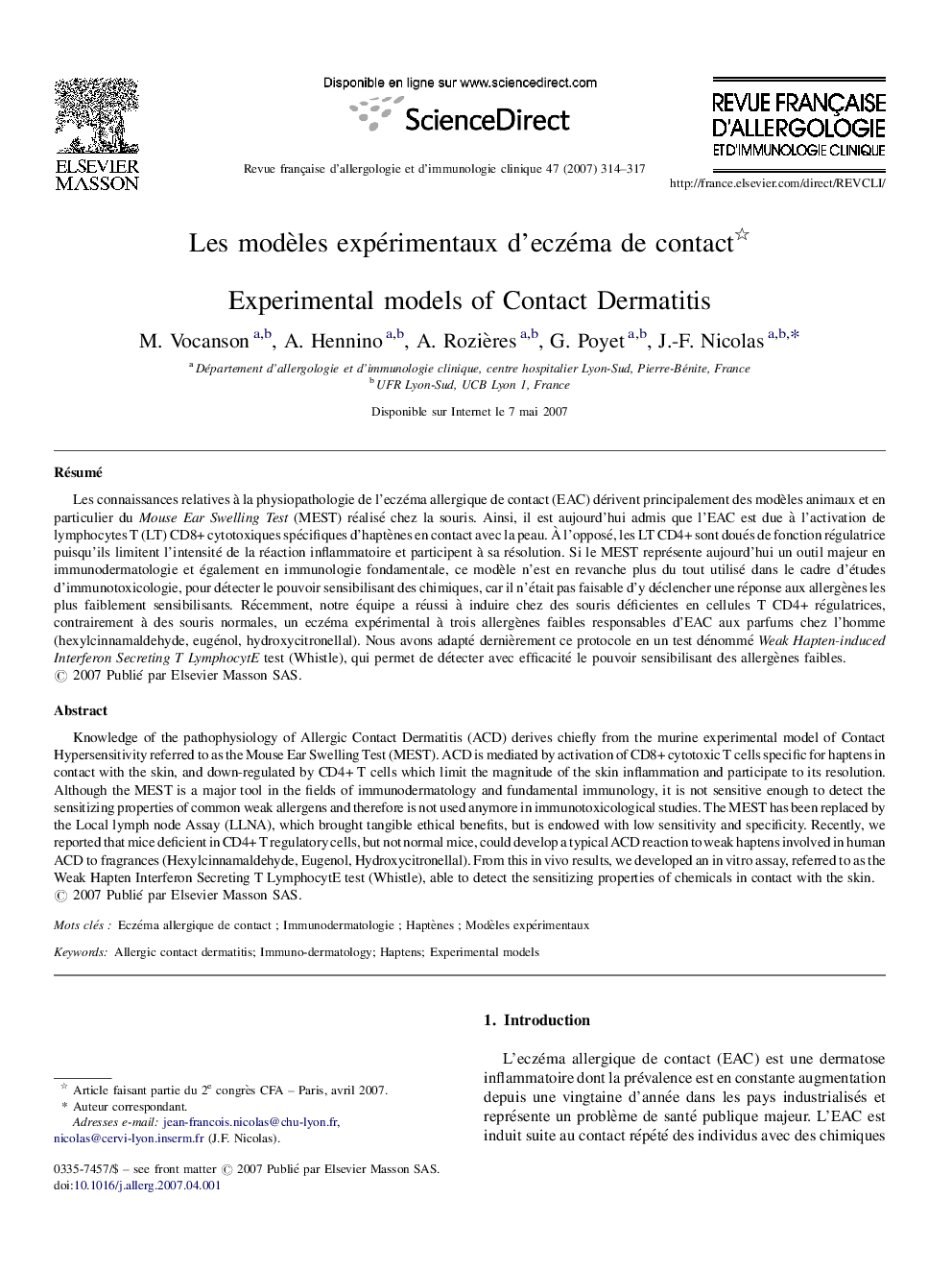| Article ID | Journal | Published Year | Pages | File Type |
|---|---|---|---|---|
| 2770283 | Revue Française d'Allergologie et d'Immunologie Clinique | 2007 | 4 Pages |
RésuméLes connaissances relatives à la physiopathologie de l’eczéma allergique de contact (EAC) dérivent principalement des modèles animaux et en particulier du Mouse Ear Swelling Test (MEST) réalisé chez la souris. Ainsi, il est aujourd’hui admis que l’EAC est due à l’activation de lymphocytes T (LT) CD8+ cytotoxiques spécifiques d’haptènes en contact avec la peau. À l’opposé, les LT CD4+ sont doués de fonction régulatrice puisqu’ils limitent l’intensité de la réaction inflammatoire et participent à sa résolution. Si le MEST représente aujourd’hui un outil majeur en immunodermatologie et également en immunologie fondamentale, ce modèle n’est en revanche plus du tout utilisé dans le cadre d’études d’immunotoxicologie, pour détecter le pouvoir sensibilisant des chimiques, car il n’était pas faisable d’y déclencher une réponse aux allergènes les plus faiblement sensibilisants. Récemment, notre équipe a réussi à induire chez des souris déficientes en cellules T CD4+ régulatrices, contrairement à des souris normales, un eczéma expérimental à trois allergènes faibles responsables d’EAC aux parfums chez l’homme (hexylcinnamaldehyde, eugénol, hydroxycitronellal). Nous avons adapté dernièrement ce protocole en un test dénommé Weak Hapten-induced Interferon Secreting T LymphocytE test (Whistle), qui permet de détecter avec efficacité le pouvoir sensibilisant des allergènes faibles.
Knowledge of the pathophysiology of Allergic Contact Dermatitis (ACD) derives chiefly from the murine experimental model of Contact Hypersensitivity referred to as the Mouse Ear Swelling Test (MEST). ACD is mediated by activation of CD8+ cytotoxic T cells specific for haptens in contact with the skin, and down-regulated by CD4+ T cells which limit the magnitude of the skin inflammation and participate to its resolution. Although the MEST is a major tool in the fields of immunodermatology and fundamental immunology, it is not sensitive enough to detect the sensitizing properties of common weak allergens and therefore is not used anymore in immunotoxicological studies. The MEST has been replaced by the Local lymph node Assay (LLNA), which brought tangible ethical benefits, but is endowed with low sensitivity and specificity. Recently, we reported that mice deficient in CD4+ T regulatory cells, but not normal mice, could develop a typical ACD reaction to weak haptens involved in human ACD to fragrances (Hexylcinnamaldehyde, Eugenol, Hydroxycitronellal). From this in vivo results, we developed an in vitro assay, referred to as the Weak Hapten Interferon Secreting T LymphocytE test (Whistle), able to detect the sensitizing properties of chemicals in contact with the skin.
